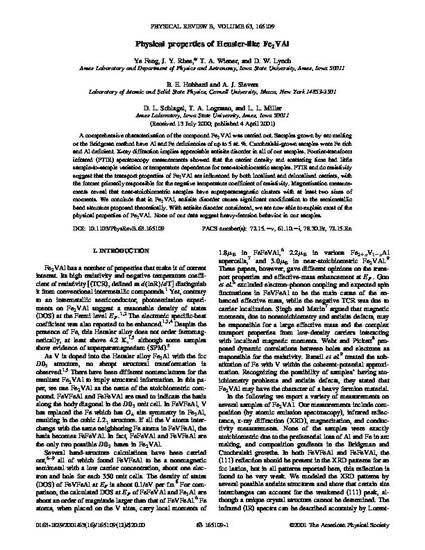
A comprehensive characterization of the compound Fe2VAl was carried out. Samples grown by arc melting or the Bridgman method have Al and Fe deficiencies of up to 5 at. %. Czochralski-grown samples were Fe rich and Al deficient. X-ray diffraction implies appreciable antisite disorder in all of our samples. Fourier-transform infrared (FTIR) spectroscopy measurements showed that the carrier density and scattering time had little sample-to-sample variation or temperature dependence for near-stoichiometric samples. FTIR and dc resistivity suggest that the transport properties of Fe2VAl are influenced by both localized and delocalized carriers, with the former primarily responsible for the negative temperature coefficient of resistivity. Magnetization measurements reveal that near-stoichiometric samples have superparamagnetic clusters with at least two sizes of moments. We conclude that in Fe2VAl, antisite disorder causes significant modification to the semimetallic band structure proposed theoretically. With antisite disorder considered, we are now able to explain most of the physical properties of Fe2VAl. None of our data suggest heavy-fermion behavior in our samples.
Available at: http://works.bepress.com/david_lynch1/103/

This article is from Physical Review B 63 (2001): 165109, doi:10.1103/PhysRevB.63.165109.